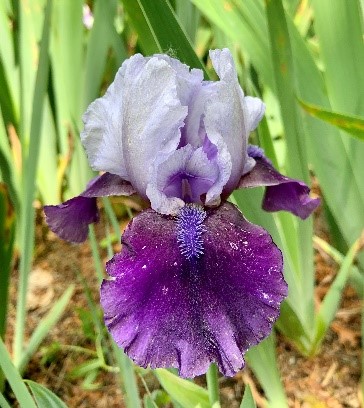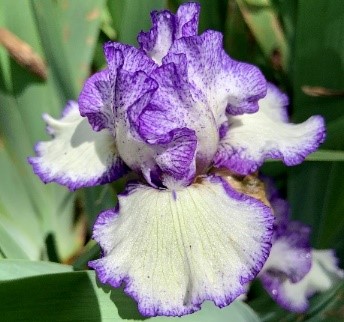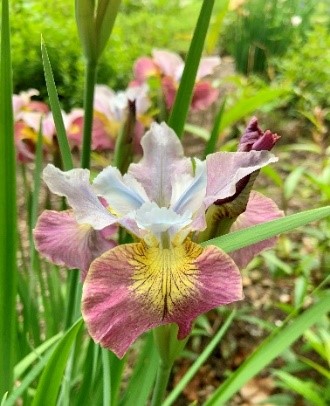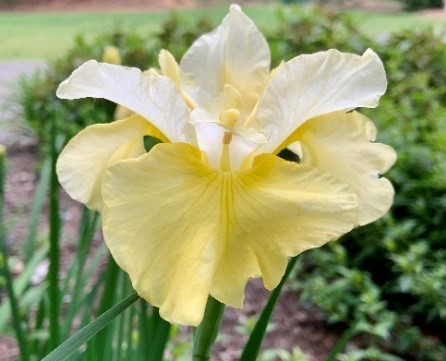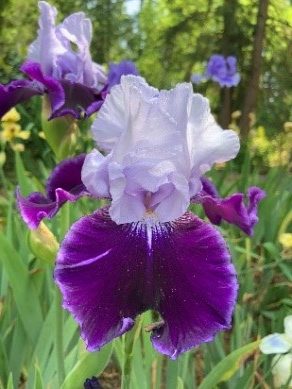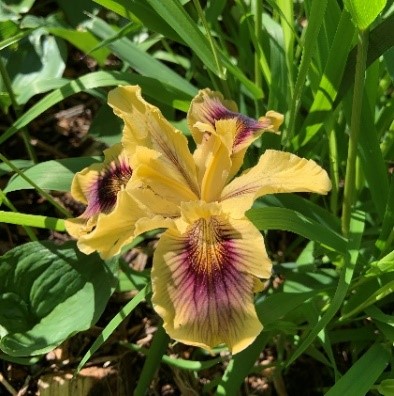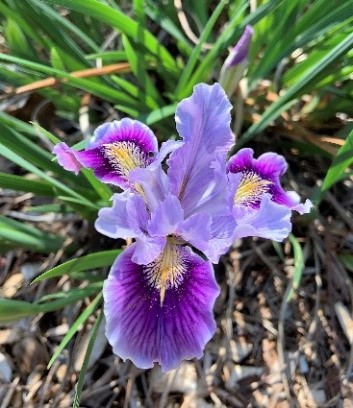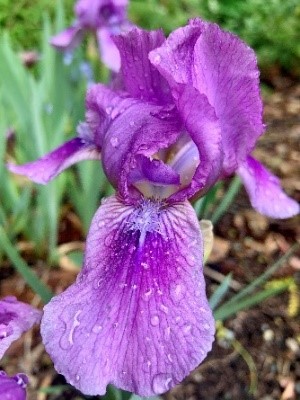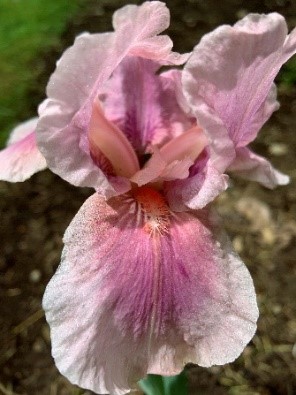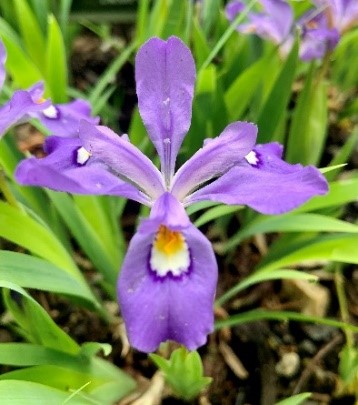The tall, beautiful iris, named after the Greek goddess who rode rainbows, comes in many magical colors. Several varieties of iris exist, providing intricate and exquisite blooms in sunny areas of the garden. Irises are perennial plants growing from creeping rhizomes (rhizomatous irises) or, in drier climates, from bulbs (bulbous irises). The rhizomatous species usually have 3-10 basal sword-shaped leaves growing in dense clumps. Irises also attract butterflies and hummingbirds, make wonderful cut flower, are deer-resistant and drought-tolerant.
The most familiar irises are the tall (at least 28 inches) bearded irises (Iris germanica). The distinctive flowers have three large outer petals called “falls” and three inner upright petals called “standards.” The falls may have beards or crests. Bearded iris are so-called because they have soft hairs along the center of the falls. In crested iris, the hairs form a comb or ridge.
Caring for iris is relatively simple once the plant is established. Iris plant care consists mainly of dividing the iris plants to assure continued blooms. Iris plants are abundant multipliers but once the rhizomes of iris plants become crowded, the flowers may be limited and the rhizomes need to be separated. Plant rhizomes in a sunny location, a spot will they will receive a least half a day of sun. Without enough sun, they won’t bloom. Leave room for growth between the rhizomes and do not bury the entire rhizome. Make sure roots are covered, but allow the rhizome to remain partially above ground to avoid root rot. Once blooms fade, leave the foliage to yellow before removing from the garden. You may want to plant so later blooming specimens cover the remaining foliage. As with many spring bulbs, the foliage is sending nutrients to the rhizome for next year’s flowers.

